Hyundai Kona vs Nissan X-Trail – Performance, range & efficiency compared
Two cars, one duel: Hyundai Kona meets Nissan X-Trail.
Which one wins in performance, efficiency and value for money? Find out now!
Costs and Efficiency:
Price and efficiency are key factors when choosing a car – and this is often where the real differences emerge.
Hyundai Kona has a decisively advantage in terms of price – it starts at 23100 £, while the Nissan X-Trail costs 34000 £. That’s a price difference of around 10971 £.
Fuel consumption also shows a difference: Hyundai Kona manages with 4.60 L and is therefore noticeable more efficient than the Nissan X-Trail with 5.70 L. The difference is about 1.10 L per 100 km.
Engine and Performance:
Under the bonnet, it becomes clear which model is tuned for sportiness and which one takes the lead when you hit the accelerator.
When it comes to engine power, the Hyundai Kona has a minimal edge – offering 218 HP compared to 213 HP. That’s roughly 5 HP more horsepower.
In acceleration from 0 to 100 km/h, the Nissan X-Trail is somewhat quicker – completing the sprint in 7 s, while the Hyundai Kona takes 7.80 s. That’s about 0.80 s faster.
In terms of top speed, the Hyundai Kona performs slight better – reaching 210 km/h, while the Nissan X-Trail tops out at 200 km/h. The difference is around 10 km/h.
There’s also a difference in torque: Nissan X-Trail pulls convincingly stronger with 525 Nm compared to 265 Nm. That’s about 260 Nm difference.
Space and Everyday Use:
Beyond pure performance, interior space and usability matter most in daily life. This is where you see which car is more practical and versatile.
Seats: Nissan X-Trail offers clearly perceptible more seating capacity – 7 vs 5.
In curb weight, Hyundai Kona is evident lighter – 1370 kg compared to 1668 kg. The difference is around 298 kg.
In terms of boot space, the Nissan X-Trail offers noticeable more room – 585 L compared to 466 L. That’s a difference of about 119 L.
In maximum load capacity, the Nissan X-Trail performs minimal better – up to 1424 L, which is about 124 L more than the Hyundai Kona.
When it comes to payload, Nissan X-Trail a bit takes the win – 574 kg compared to 490 kg. That’s a difference of about 84 kg.
Who comes out on top?
Overall, the Nissan X-Trail shows itself to be won narrowly and secures the title of DriveDuel Champion.
It convinces with the more balanced overall package and proves to be the more versatile choice for everyday use.
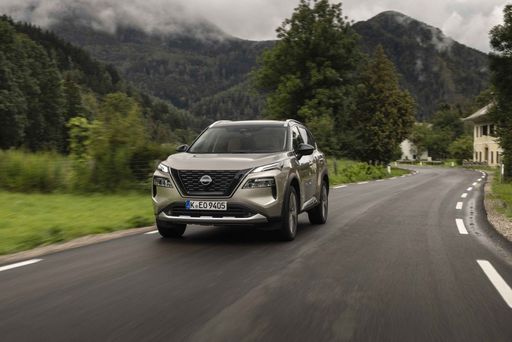
Nissan X-Trail
Hyundai Kona
The Hyundai Kona blends a bold design with a versatile interior, making it a standout choice in the compact SUV market. Its crisp handling and responsive steering provide an engaging driving experience, whether in the city or on the open road. The vehicle also offers a range of features designed to enhance comfort and connectivity, ensuring a pleasurable journey for both driver and passengers.
details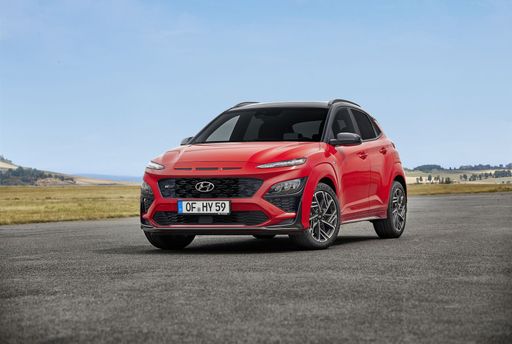 @ hyundai.news
@ hyundai.news
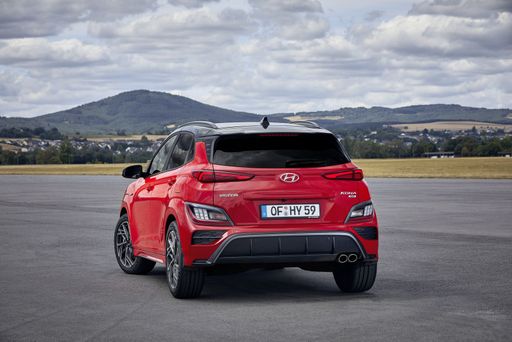 @ hyundai.news
@ hyundai.news
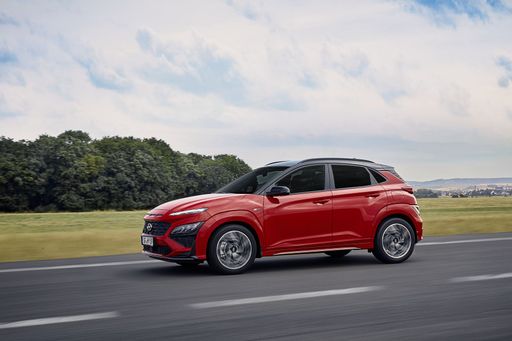 @ hyundai.news
@ hyundai.news
 @ hyundai.news
@ hyundai.news
Nissan X-Trail
The Nissan X-Trail stands out with its spacious interior and practical design, making it an ideal choice for families and adventure enthusiasts alike. Its sleek exterior styling is complemented by modern technology features that enhance both driving pleasure and safety. This versatile SUV offers a comfortable ride, whether navigating city streets or exploring off-road paths, ensuring you travel in style and comfort.
details @ germany.nissannews.com
@ germany.nissannews.com
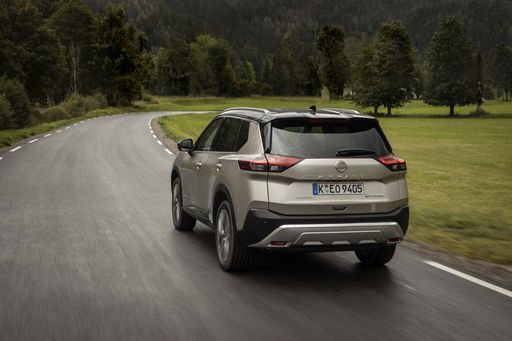 @ germany.nissannews.com
@ germany.nissannews.com
 @ germany.nissannews.com
@ germany.nissannews.com
 @ germany.nissannews.com
@ germany.nissannews.com

|

|
|
|
|
Costs and Consumption |
|
|---|---|
|
Price
23100 - 41600 £
|
Price
34000 - 50400 £
|
|
Consumption L/100km
4.6 - 7 L
|
Consumption L/100km
5.7 - 6.9 L
|
|
Consumption kWh/100km
14.6 - 16.8 kWh
|
Consumption kWh/100km
-
|
|
Electric Range
377 - 514 km
|
Electric Range
-
|
|
Battery Capacity
1.3 - 65.4 kWh
|
Battery Capacity
-
|
|
co2
0 - 163 g/km
|
co2
131 - 161 g/km
|
|
Fuel tank capacity
38 - 47 L
|
Fuel tank capacity
55 L
|
Dimensions and Body |
|
|---|---|
|
Body Type
SUV
|
Body Type
SUV
|
|
Seats
5
|
Seats
5 - 7
|
|
Doors
5
|
Doors
5
|
|
Curb weight
1370 - 1773 kg
|
Curb weight
1668 - 1961 kg
|
|
Trunk capacity
466 L
|
Trunk capacity
177 - 585 L
|
|
Length
4350 - 4385 mm
|
Length
4680 mm
|
|
Width
1825 mm
|
Width
1840 mm
|
|
Height
1580 - 1585 mm
|
Height
1720 mm
|
|
Max trunk capacity
1300 L
|
Max trunk capacity
1396 - 1424 L
|
|
Payload
420 - 490 kg
|
Payload
432 - 574 kg
|
Engine and Performance |
|
|---|---|
|
Engine Type
Electric, Petrol, Full Hybrid
|
Engine Type
Petrol MHEV, Full Hybrid
|
|
Transmission
Automatic, Manuel
|
Transmission
Automatic
|
|
Transmission Detail
Manual Gearbox, Dual-Clutch Automatic
|
Transmission Detail
CVT, Reduction Gearbox
|
|
Drive Type
Front-Wheel Drive, All-Wheel Drive
|
Drive Type
Front-Wheel Drive, All-Wheel Drive
|
|
Power HP
115 - 218 HP
|
Power HP
163 - 213 HP
|
|
Acceleration 0-100km/h
7.8 - 11.9 s
|
Acceleration 0-100km/h
7 - 9.6 s
|
|
Max Speed
162 - 210 km/h
|
Max Speed
170 - 200 km/h
|
|
Torque
200 - 265 Nm
|
Torque
300 - 525 Nm
|
|
Number of Cylinders
3 - 4
|
Number of Cylinders
3
|
|
Power kW
85 - 160 kW
|
Power kW
120 - 157 kW
|
|
Engine capacity
998 - 1598 cm3
|
Engine capacity
1497 cm3
|
General |
|
|---|---|
|
Model Year
2024 - 2025
|
Model Year
2024
|
|
CO2 Efficiency Class
A, D, C, E, F
|
CO2 Efficiency Class
F, D, E
|
|
Brand
Hyundai
|
Brand
Nissan
|
Is the Hyundai Kona offered with different drivetrains?
Available configurations include Front-Wheel Drive or All-Wheel Drive.
The prices and data displayed are estimates based on German list prices and may vary by country. This information is not legally binding.
